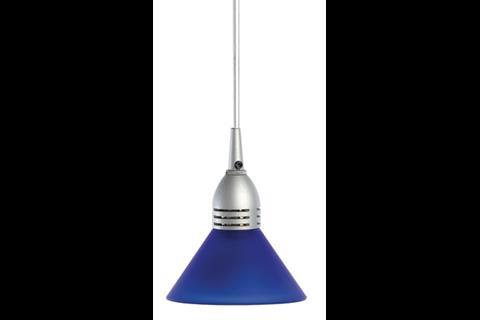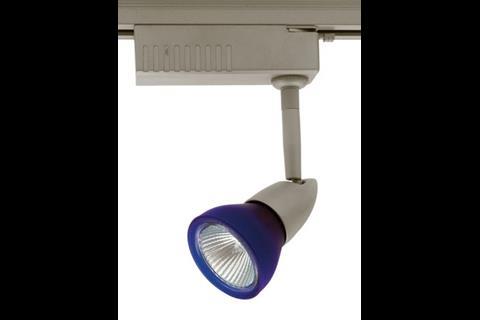Our focus on lighting begins with a review of developments in track installations by Paul Davidson, who puts the case for track lighting
Achieving a balance between ambient lighting and accent lighting is critical. If there is too much ambient lighting, additional accent lighting will be needed to create the desired contrast. Too little ambient lighting and the space will appear dark so additional accent lighting will be needed, and the resulting focused lighting to all areas will take away the effect of the object being featured.
The early track light fittings used mainly reflector lamps or incandescent PAR lamps with an internal silver coating to direct the light. These were inefficient, with low lumens per watt, and so numerous fittings were required to illuminate the feature or object.
The introduction of low-voltage and GU10 mains voltage halogen light sources improved track lighting as they were much smaller and offered a whiter, more precise beam pattern as well as a number of wattages and a large range of beam widths. Other halogen lamps for track use include AR111 low- voltage aluminium lamps and mains voltage halogen PAR lamps, designed to replace the incandescent PAR.
The evolution of halogen lamps has allowed lighting manufacturers to provide much smaller and better-looking luminaires that can enhance any application.
More recently, metal halide lamps have provided good-quality light that is energy efficient with an extended lamp life, and 35W and 70W lamps are commonly used for track-mounted luminaires. The metal halide light source offers better colour quality and, when used in the ceramic metal halide (CMH) format, does not suffer from colour shift, which can be a problem with standard quartz metal halide lamps. Colour shift may distort the appearance of the illuminated feature or object.
Integral control gear
All metal halide lamps operate through control gear that is usually integral with the fitting in track-mounted luminaires. Electronic ballasts are most suitable as they provide a lighter, smaller solution that does not resonate during use and is more appropriate where the lamps operate for long periods.
Track systems next began to use the compact fluorescent lamp (CFL), which has good energy efficiency, long life and a wide beam distribution pattern. These lamps operate on high-frequency control gear and are ideal for flood-type distributions and wall-washing, but tend not to provide a concentrated beam pattern.
High-frequency control gear produces instant illumination and allows a lightweight and compact fitting. There are also GU10-based CFLs, with integral electronic control gear housed in the lamp, which can be fitted directly to a standard GU10 halogen track fitting. Like other CFLs, however, they provide a less concentrated beam pattern.
The most recent light source to be used in track installations is LED (light-emitting diode). The technology is improving at a rapid pace, which has encouraged a number of manufacturers to develop new fittings.
The Luxeon LED is ideal for track lighting as it provides a precise light source with a controlled distribution pattern. It is also lightweight and has an extended lamp life, usually in excess of 40,000 hours. It is ideal for use with items such as fabrics and paintings as it is free from UV and infra-red energy and is cool burning.
LED is more expensive to install but if it used to replace a light source such as halogen, the cost difference can be recouped thanks to the greater energy efficiency.
The disadvantage of some track lighting systems is that they tend not to offer additional surface-mounted fittings to complement those that are installed onto the track.
Some of the latest professional track systems are now offering luminaries that can also be featured as standalone fittings by utilising monopoint or multipoint surface mounting kits. These fittings provide a complete solution, helping to maintaining the design integrity and continuity of the lighting scheme.
Original print headline - Take a shine to energy saving
Source
Building Sustainable Design
Postscript
Paul Davidson is lighting design manager at Ansell Lighting.























No comments yet